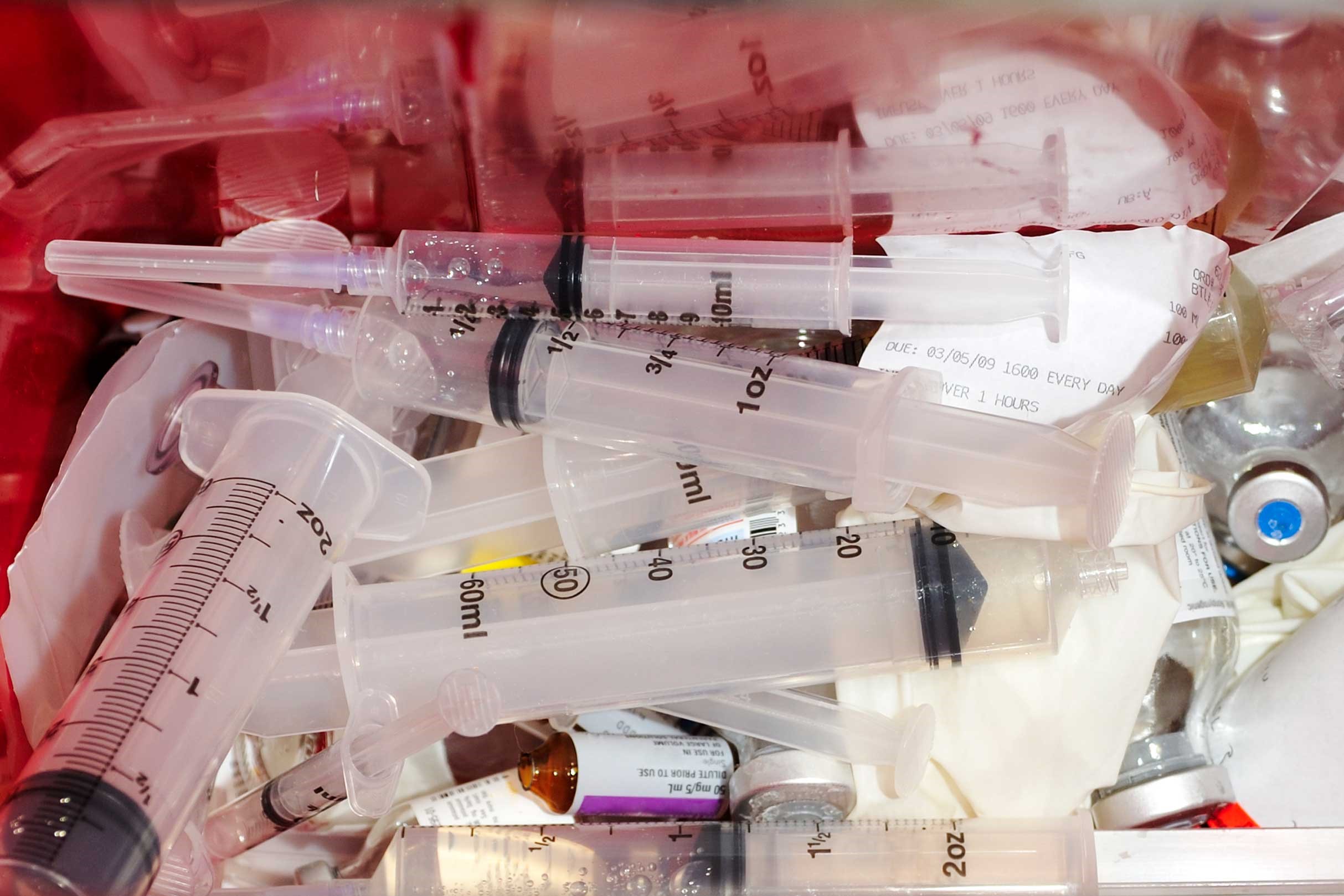
Sharps Wastes - What You should Do or Do Not in handling Medical Sharps Wastes
Injuries caused by sharps wastes, such as needlestick injuries, remain to be one of the most common hazards for practitioners handling hypodermic syringes and other types of needle equipments.
It is an injury that could occur anytime during the usage, assemble or disassembly, and disposal of used needles.
Furthermore, sharps waste does not only encompass needles and syringes.
It may also include other infectious wastes that can pierce the skin such as lancets, broken glass, and other sharp materials.
It could be the mode of transmission of hepatitis, bacterial infections, and human immune virus (HIV).
To prevent sharps wastes injury, one must handle these appropriately and must:
1. DO NOT re-use the syringe
– The re-use of needles and sharps causes millions of infections annually. The accidental re-use of syringes are hoped to be minimised through the use of auto-disable syringes, as well s proper disposal of sharps wastes.
2. DO NOT re-cap the syringe
– When the user puts the cover of the needle after usage, there is a great tendency that the user accidentally puncture own self. Previous guidelines suggested the use of “fishing technique” in which the cap is placed in a surface, and fish it through the use of the needle. However, new guidelines suggest that the needles should not be re-capped, rather be disposed immediately in a puncture-resistant container.
3. DO USE the needle cutters
– The use of needle cutter prevents the accidental re-use of old needles and syringes. Also, needle cutters should pass the standards which should be made of high-grade, puncture proof materials.
4. DO PRACTICE proper disposal
– Health care workers should properly dispose sharps wastes immediately in the appropriate container. It is suggested that the container is puncture-proof, and must be accessible at the point of care in order to facilitate immediate disposal.
5. DO USE proper autoclave techniques, as appropriate
– The use of disposable and sterile sharps and syringes are greatly encouraged by the infection control governing bodies. However, in instances where re-use of high-grade sharps is needed, the materials should be decontaminated and autoclaved properly. This procedure must be carried out in accordance to the guidelines set by the United Nations Development Program Global Healthcare Waste Project (2010).
Read Also:
Sharp-Eyed FDNY Inspector Spots Unsecured Propane Tanks At Major Brooklyn Construction Site


